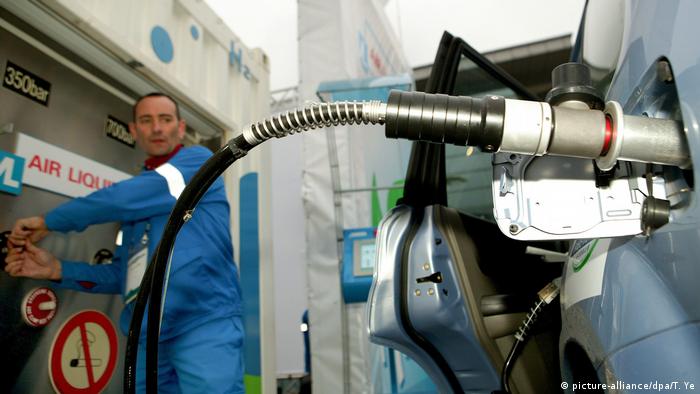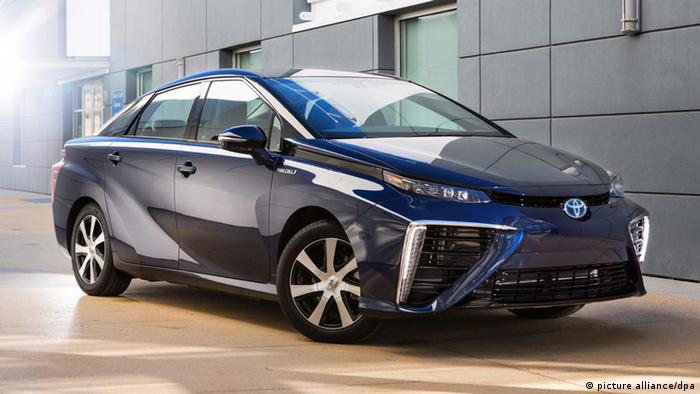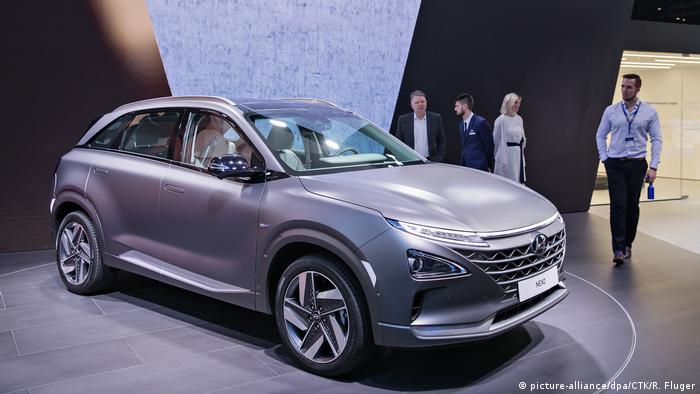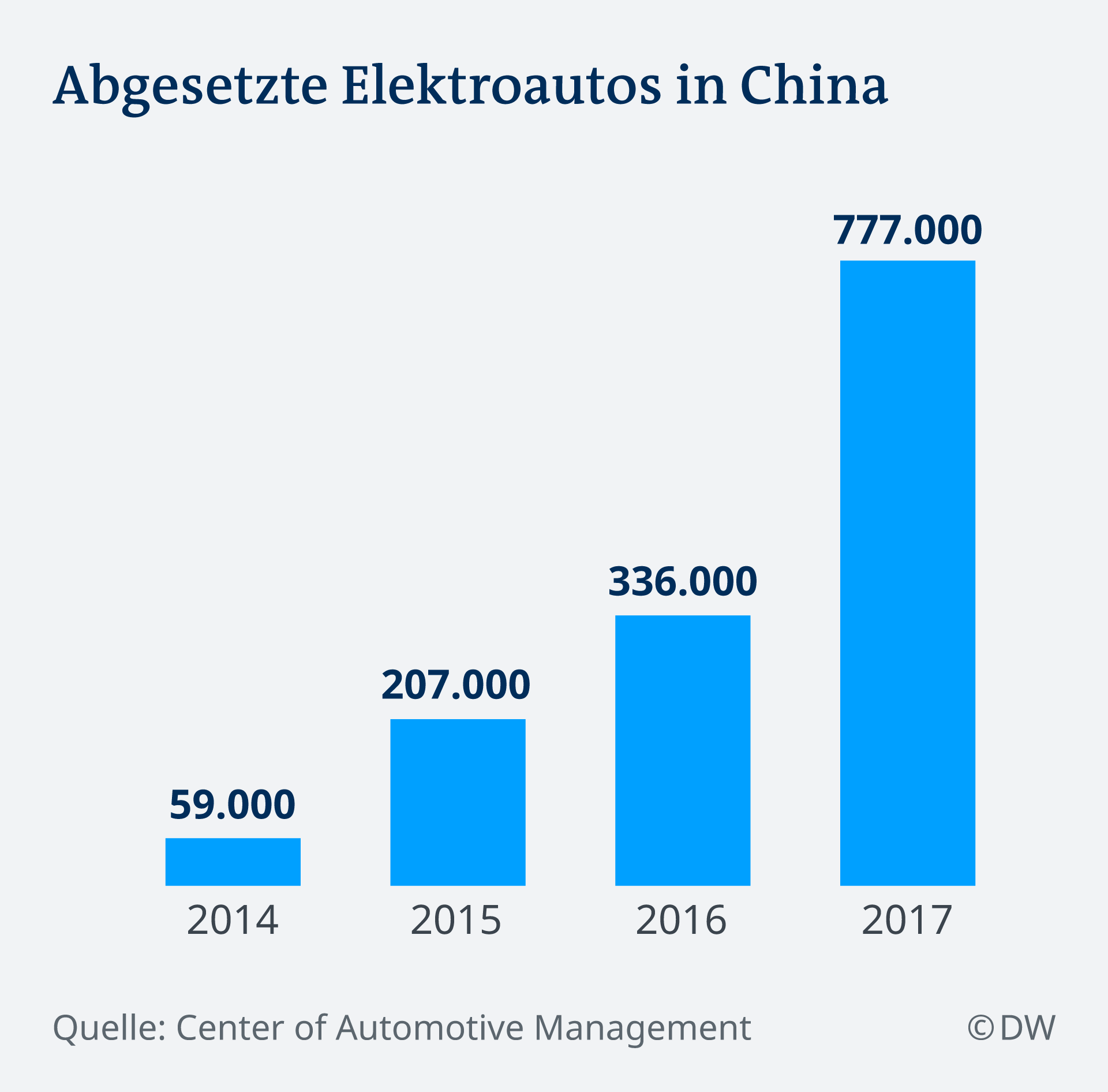Should car manufacturers rely only on E-cars or not, maybe it is the fuel cell? The so-called technology-openness, a dispute has flared up. But what type of drive is better?

When it comes to traffic, it is a completely safe: business-as-usual can go on. Not sure, however, is how the future will look like. It comes after Europe’s biggest manufacturer Volkswagen, then the answer is pretty clear. In the future, battery-electric cars will determine the street image.
Even if Europe’s largest car maker invests in this area – so all of the other Alternatives such as fuel cell, VW is not adopted. Of the around 40 billion euros to spend, the German car maker in the coming three years for the development of alternative drive systems, especially for battery-electric cars – a very small fraction of the fuel cell.

Fuel-cell Cars and battery electric cars to both electric motors
A bit of vapor and great range
Carefully fuel cell cars or hydrogen cars are also electric cars are taken. Only the electric motor is not driven with energy from a battery, but a fuel cell. In this fuel cell there is a chemical reaction between hydrogen and oxygen, the electricity that drives the Motor. Emissions there are hardly any – only water vapor.
Fuel cells have on the first glance, the big advantages over battery-electric cars, The “Refueling” takes only about three minutes, and driven up to 600 km – significantly more than with battery-driven E-cars.
High cost, low efficiency and little gas stations
Water vapor as the only Emission, large range, quick Refuelling – sounds, actually, as the fuel cell would be the ideal engine of the future. If not for the downsides of the technology. Because the purchase price is a lot higher than with more expensive battery-electric cars. Platinum needed in fuel cell drives up the cost. In addition, there is as yet no mass production of hydrogen vehicles, which drives the price up.
And as environment-friendly as they appear at first glance, the fuel-cell cars. The degree of efficiency indicates the ratio of energy produced to energy used. “In the case of battery-driven cars, the efficiency is 70 percent of the energy used in diesel engines and Otto engines are about 30 percent. The fuel cell has only an efficiency of 20 to 30 percent”, said auto expert Stefan Bratzel of the newspaper world on Sunday.

Refueling of hydrogen is much faster than an E-car charge.
This is because the hydrogen is not in the nature occurs. He needs to be with a lot of energy costs. This hydrocarbon will be cleaved under application of energy, the hydrogen produced is compressed to the gas station and then in the fuel cell is converted into electricity to drive the Motor. On the way there, a lot of energy is lost.
However, battery – electric cars, despite the better efficiency are not really environmentally friendly even if the electricity comes exclusively from Renewable energy sources. In the manufacture of the batteries, a large amount of CO2. In addition, rare and hard-of-degradable raw materials such as Lithium or cobalt are used, their removal also pollutes the environment.
A refueling infrastructure is extremely thin
Whether hydrogen, natural gas or battery-electric vehicles – which technology will prevail in the market depends to a large part of the station density and the hydrogen thin.
At just around 50 jobs you can fill at present in Germany the use of hydrogen. The should improve: – by 2020 the Federal government intends to build 100 hydrogen filling stations for fuel-cell Cars – a lot of the is still not. For battery-electric vehicles, there are already over 17,000 charging stations in Germany and currently is heavily invested in many more.

So far, there are hardly any hydrogen filling stations in Germany and hardly any passenger Cars with fuel cells
Hardly fuel-cell vehicles on the market
Those in the area of the tank trouble does not slow down, not have great be spoilt for choice as there are hardly any cars with a fuel cell. One of the few vehicles coming from Toyota. The Japanese, in addition to the Hybrid models of the fuel cell. Battery cars wants to build a Toyota in the next decade.

So Japan looks organic fuel cell car, the Mirai, Toyota
“We need to start now with the fuel cell, not sometime in the future,” said Toyota spokesman Hisashi Nakai of the newspaper world on Sunday. The Mirai Toyota’s first hydrogen sedan in the series. No later than the following year 30,000 Mirai models to be sold in the year – so far, there are only a few Thousand. In Japan itself, in 2017, just 850 fuel-cell vehicles were newly registered.
“We can understand if someone wants to on a technology focus,” said Nakai in relation to other manufacturers. “But we believe that we need both the battery and the fuel cell. In this case, Toyota is supported by the Japanese government.
Also Honda has the Clarity Fuel Cell a fuel cell vehicle. But that will not be sold in Germany.
The third car manufacturer that relies on fuel cells, Hyundai. The Nexo drives around 660 kilometres. In addition, Hyundai invested heavily in hydrogen technology. By the end of 2018 the Foundation stone for a new fuel cell factory was placed in South Korean Chungju to build a step on the way to the financial goal, by 2030, half a Million fuel cell vehicles. For this, the company is willing to invest six billion euros up to 2030, the technological development and production capacity for hydrogen cars.

The fuel cell car from Hyundai: The Nexo at the Geneva auto salon
German model – only for Rent
The German researching for more than 20 years in the field of fuel cell technology, have although working prototypes, but not production-ready products. In this regard, Daimler showed in 2011 what is going on, and left three on hydrogen converted Mercedes passenger Cars, the earth is circumnavigate. The Swabians also the first of the German manufacturers, which have a hydrogen car on the market since November of 2018 are, however, only for Rent.

Also in China, the huge market that every car maker in the world, if possible, wants to play, is to play the fuel-cell future, even if not the decisive. By 2030, ten million electric vehicles (currently there are approximately 1.2 million) on the streets. In comparison, there are only very few fuel-cell Cars. To change this, to expand China’s infrastructure. By 2030, there will be 3000 hydrogen-filling stations; in addition, the fuel cell technology was included in the current five-year plan.
For a long time, and other areas
“In the long term, there is no way water will cause the fabric over,” says Werner Klement from the University of Esslingen. Especially in the area of commercial vehicles – Trucks or buses – he sees the Potential for fuel-cell vehicles. “The whole commercial vehicle sector will not work with the battery,” says Klement. “It only works with fuel cell.”

In Germany buses and trains are already running on hydrogen. Since September of 2018 is the first of two hydrogen trains from Alstom in the North of Germany.
Stefan Bratzel from the Center of Automotive Management says in the world on Sunday: especially “in the case of large vehicles with heavy loads to transport and longer distances, such as buses, trucks or trains, expect the fuel cell”. Most of the worldwide produced fuel cell cars are currently sold in Japan and California, as well as, on a much smaller piece – in Europe. Also South Korea and China establish themselves as important markets, so the Tenor of the auto experts.
Florian Hacker from the Öko-Institut in Berlin, is convinced that in the next ten years, battery-driven cars will increase, while fuel cells cars are not a lot of going to do that. The fuel cell is not. “I think we should not make the mistake, today’s technologies are, in principle, to exclude,” says Hacker.